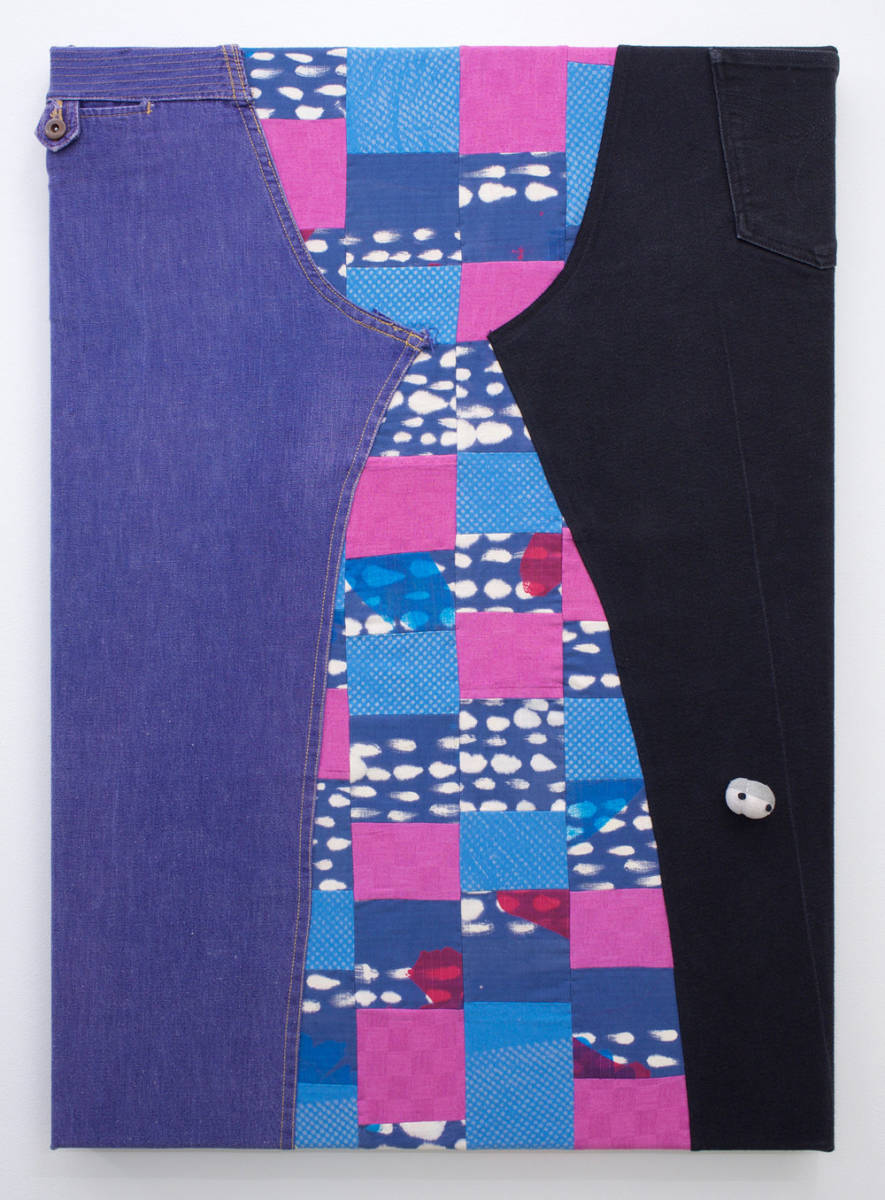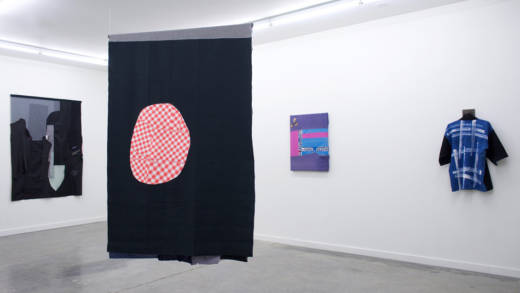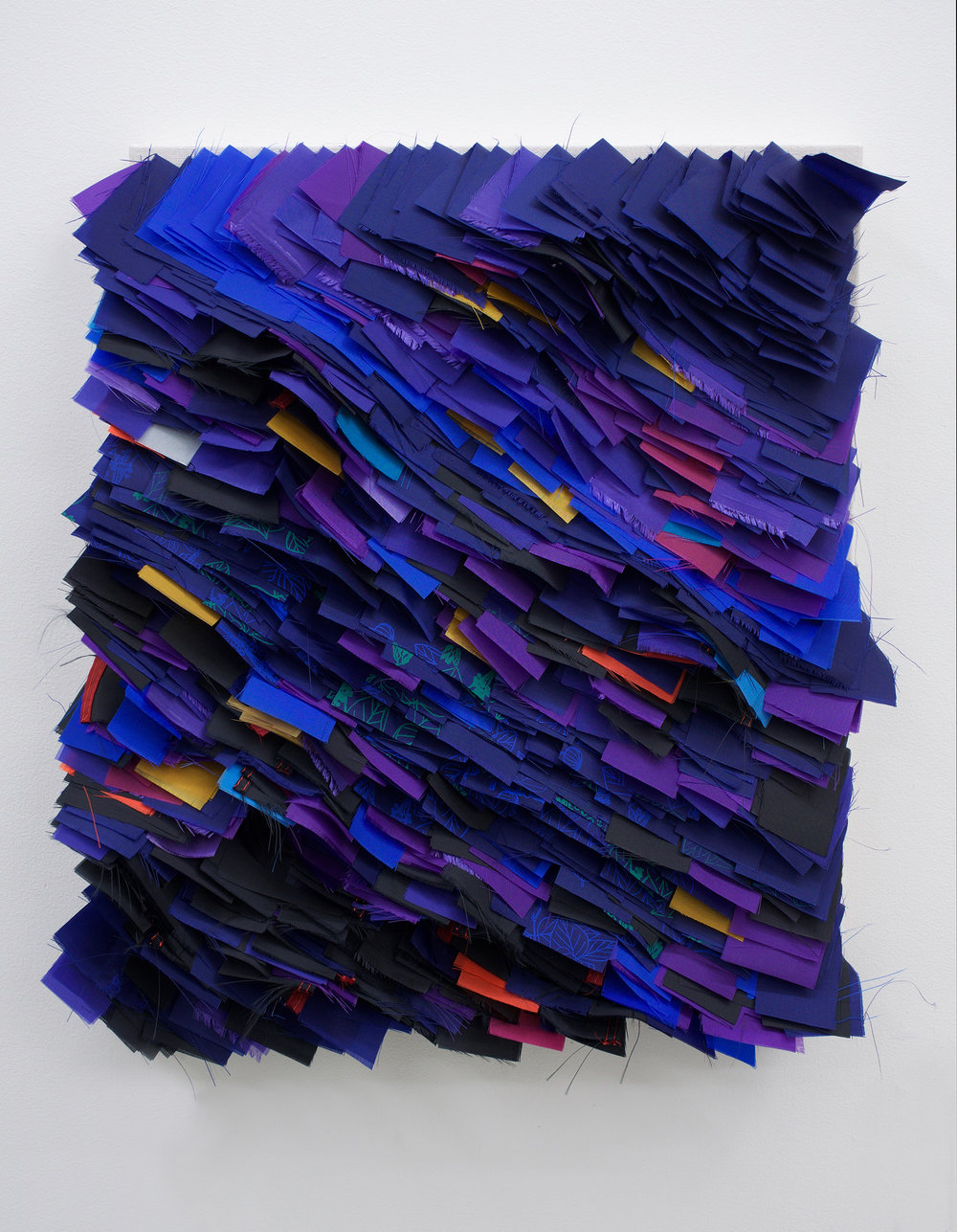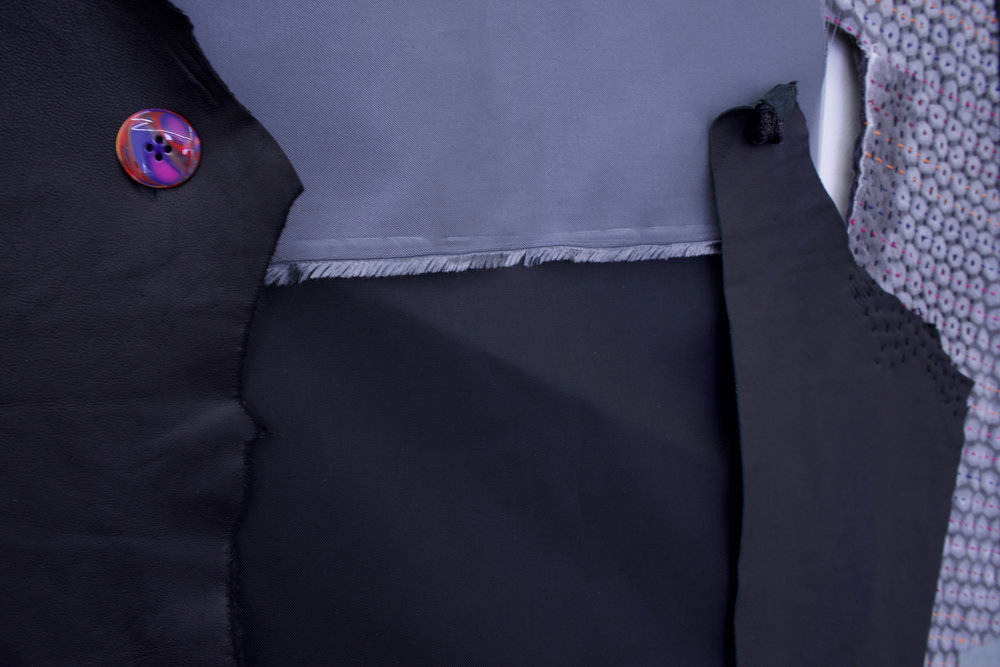Amanda Curreri’s current exhibition at Romer Young Gallery starts with a bit of concrete poetry. In the press release, on three lines, the Cincinnati-based artist selectively eliminates letters from the phrase “COUNTRY HOUSES,” alternately spelling out “TRY,” “CRY” and “ON US.”
Just who is offering up a shoulder (or surface) to cry on isn’t identified, but hazarding a guess, it’s likely Currerri’s textile works, which hang stretched and draped throughout the gallery space. These fabric “paintings” and large-scale banners blend fine finishing with raw edges in combinations of disparate materials, textures and prints. Several pieces become all the more personified with the attachment of dog-toy eyes.

Upon closer inspection these textile pieces, which look familiar and comforting (or simply soft), often conceal hidden messages, pockets and small embellishments that speak to Curreri’s engagement with feminist principles and queer histories as sources of strength in the midst of the current political climate.
“What can we make (different/ly) from the tools we’ve got at hand?” the press release goes on to ask. Looking at Curreri’s materials list, those tools include old books and magazines, taken-apart flags, deconstructed denim jeans, hand-dyeing techniques, tablecloths, sequins and thread. Curreri distills materials to their most basic elements—color, pattern and form—in order to build new structures and new surfaces to cry upon.
As might be expected from all of the above, the exhibition has a slightly somber feel. Small splashes of color punctuate the show, but the predominant palette is blacks, grays and indigos. The most playful elements come from Curreri’s wordplay—or in the combinations of clever titles and visual puns. (The exhibition name comes from a book page that formerly read “COUNTRY HOUSES,” but in one of her collages, Curreri eliminates the “O,” “RY” and final “S”.)





